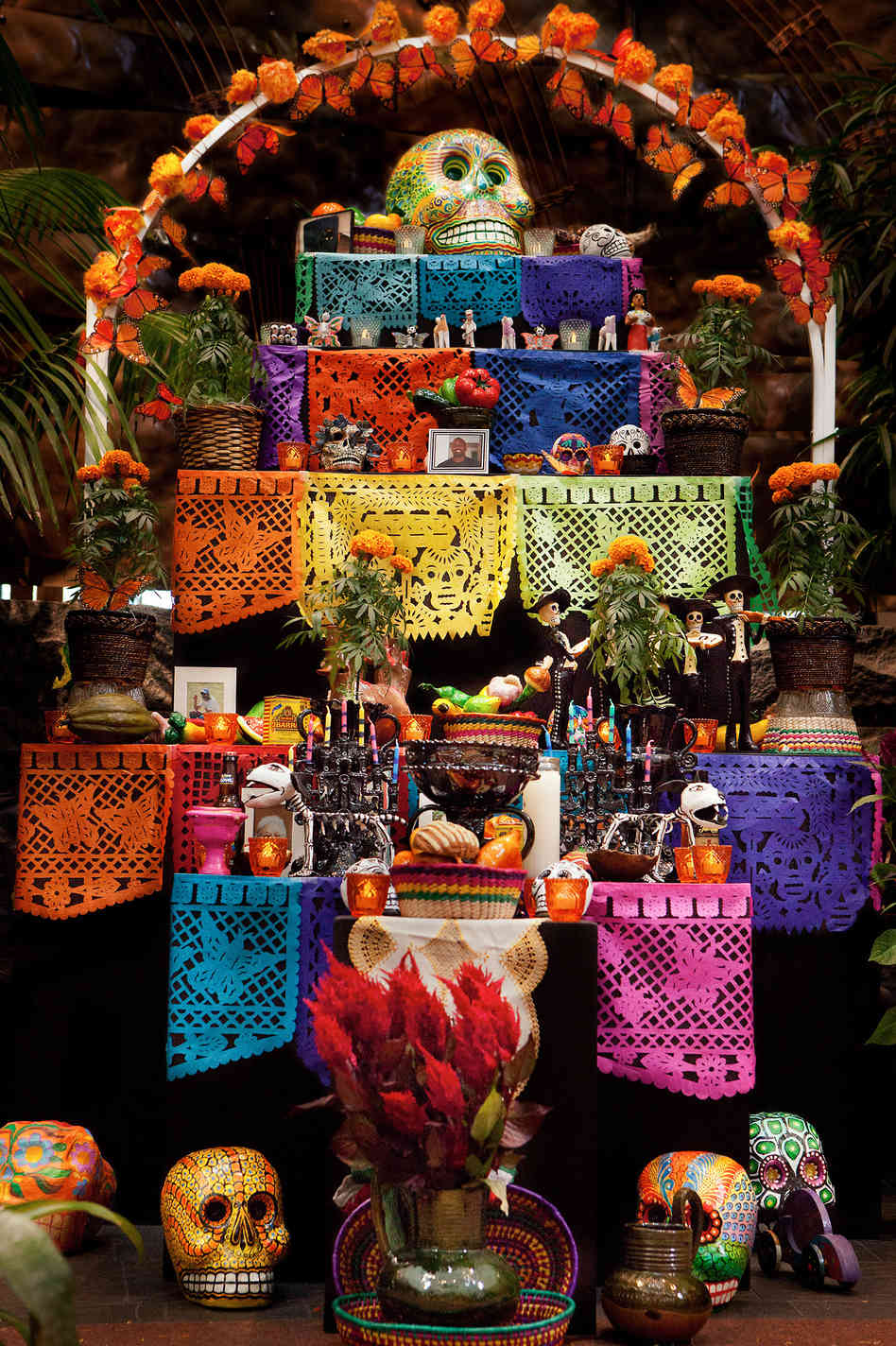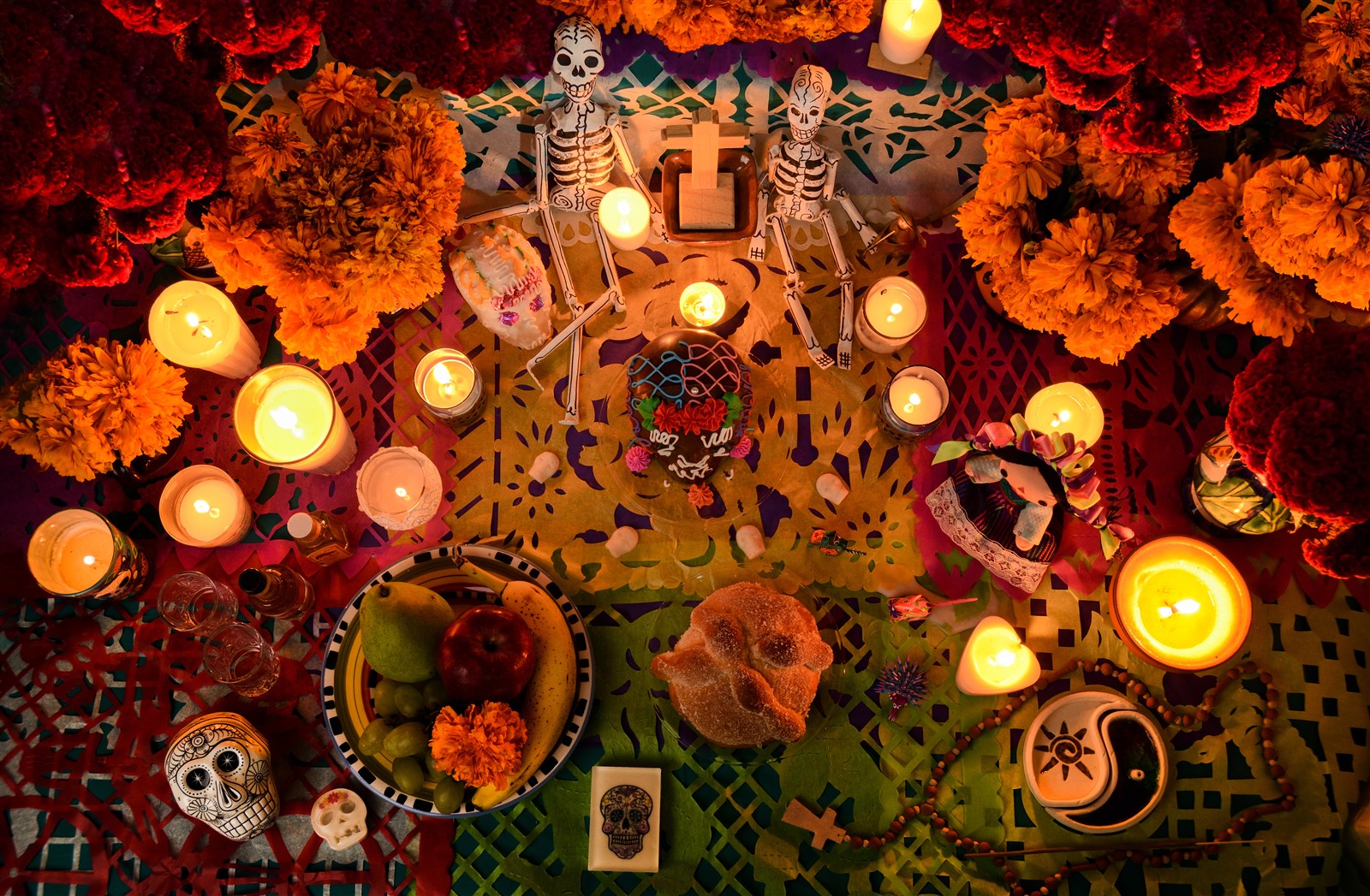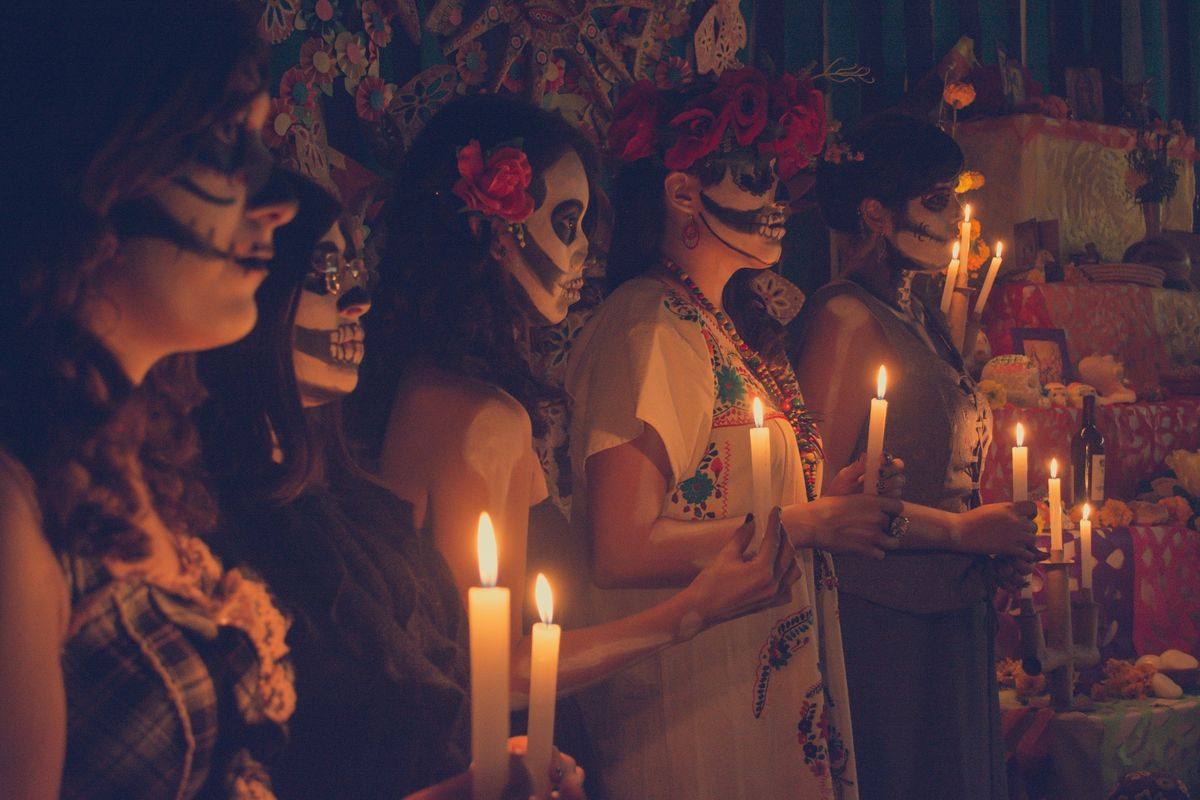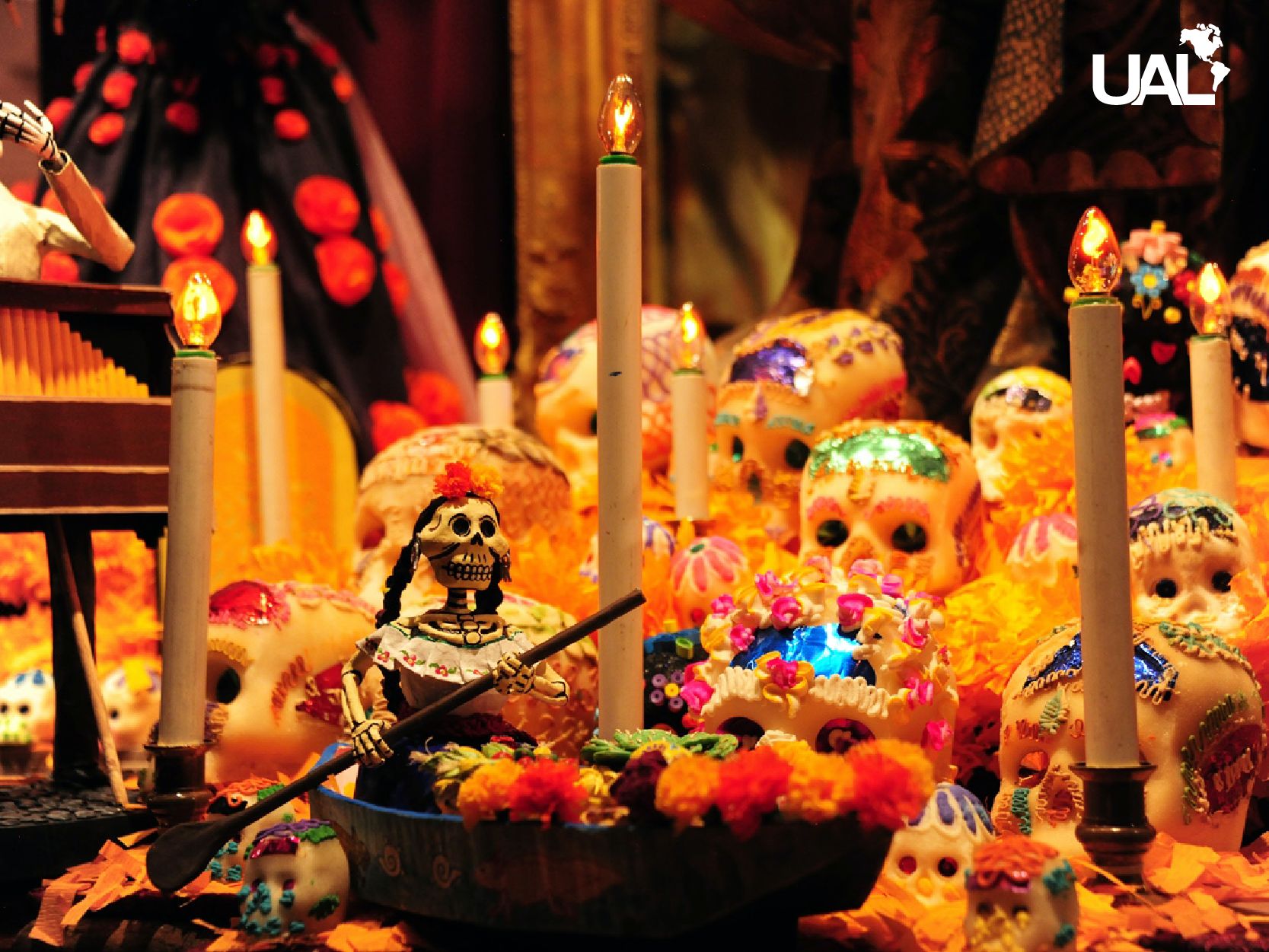
People take part in the Day of the Dead parade in Mexico City Day Of The Dead Artwork, Mexico
Día de los Muertos, or Day of the Dead, is a tradition first practiced thousands of years ago by indigenous peoples such as the Aztecs and the Toltecs. They didn't consider death the end of one.

20 Altares de muertos para elaborar con tus propias manos
DAY OF THE DEAD IN MEXICO. Nov. 2 (Día de Muertos) is not an official public holiday, though many businesses close. Mexico is most famous for Día de los Muertos, which grew out of both indigenous practices (from Aztec and Maya culture, among others) and Catholic traditions.It's where you'll see lavish parades and the classic Catrinas and painted faces in the forms of skeletons.

Panteones de Dolores y Mixquic, un imán en Día de Muertos » Eje Central
13. Honor the Xoloitzcuintli Dog. According to The Grace Museum, the Xoloitzcuintli dog (an ancient hairless dog breed that Frida Kahlo once had as a pet) is associated with Día de los Muertos.

En fotos el espectacular desfile del Día de Muertos en México Tele 13
Nov. 1 is commonly referred to as the Day of the Innocent "Día de los Inocentes" or Day of the Little Angels "Día de los Angelitos," where loved ones celebrate the lives of young.

Día de Los Muertos A Mexican Tradition and Celebration Vida Bonita
infographic. Día de los Muertos, or Day of the Dead, is a celebration of life and death. While the holiday originated in Mexico, it is celebrated all over Latin America with colorful calaveras (skulls) and calacas (skeletons). Learn how the Day of the Dead started and the traditions that make it unique.

72 hours in Mexico celebrations and spectres at the Day of the Dead parade Daily Hive Vancouver
Día de los Muertos (also known as Día de Muertos) is a Mexican holiday.The celebration occurs annually on October 31, November 1, and November 2, and is held to honor those who have died. Specifically, the term Día de los Muertos traditionally refers to November 2, when deceased adults are commemorated.November 1—a day known as Día de los Inocentes ("Day of the Innocents") or Día de.

Dónde celebrar el Día de Muertos en España Espacio Méx
Ofrendas are set up to remember and honor the memory of ancestors. Often ofrendas include Catholic religious symbols with Mesoamerican influences. Influences like the ritual of including a person's.

Día de Muertos, tradición prehispánica viva
MEXICO CITY — Day of the Dead, or Día de Muertos, is one of the most important celebrations in Mexico, with roots dating back thousands of years, long before Spanish settlers arrived. It has.

Día de Muertos una tradición que vive Efemérides Universidad América Latina
The Day of the Dead (el Día de los Muertos), is a Mexican holiday where families welcome back the souls of their deceased relatives for a brief reunion that includes food, drink and.

Nueve cosas sobre el Día de Muertos en México Noticias Diario de Burgos
Estefanía López Duque nos habla sobre las "calaveritas literarias", una popular tradición durante la celebración del Día de los Muertos en México, la cual nos invita a contemplar la impermanencia y a recordar nuestra propia mortalidad. Estefania Duque 1 November 2023. He oído decir muchas veces que los mexicanos no le tenemos miedo a.

NY Folklore unveiling Day of Dead altar
The Dia de los Muertos holiday is filled with beautiful symbols, traditions, and imagery. Every detail represents something significant and special in the remembrance of loved ones. Some traditions are rooted in ancient meso-American traditions, some came from Spanish/European cultural traditions, and some have evolved over the 3,000+ years of.

Altar de muertos origen y significado en México
Día de los Muertos is a traditional fiesta in honor of the deceased that is celebrated in Mexico and other parts of Latin America on Nov. 1 and 2. The holiday is celebrated though ritual.
:quality(80)/cloudfront-us-east-1.images.arcpublishing.com/semana/HTHFHY5XN5ABXCNWDBUKAQUFGU.jpg)
Día de los Muertos 2022 ¿Por qué se celebra hoy y qué significa?
Dia de los Muertos (Day of the Dead) is a celebration of life and death that originated in Mexico. It is now celebrated all over Latin America with colorful calaveras (skulls) and calacas.
/altar-5ad4835aeb97de00370ce4ee.jpg)
Tradición del Día de Muertos en México
Unidentified, Luis C. González, Tenth Annual Día de los Muertos Celebration, 1980, screenprint on paper, Smithsonian American Art Museum, Gift of Tomás Ybarra-Frausto, 1995.50.52 As Posada was making his images in Mexico in the mid-late 1800s, we can trace the custom of Mexican immigrants bringing their Day of the Dead rituals with them to the U.S. back to the 1890s.

Tradiciones mexicanas. El ritual de día de muertos, a través de las ofrendas
Día de los Muertos is more popular than ever—in Mexico and, increasingly, abroad. Sumpango, Guatemala, celebrates Día de los Muertos with a giant kite festival. Some kites are more than 60.

Todo lo que necesitas saber sobre el Día de Muertos en México
A: Día de los Muertos, the way we celebrate it here in the United States, emerged in Mexico, and it has had many evolutions over the course of 3,000 years in terms of what we understand it to be today. The holiday on Nov. 1 and 2 is a moment in time to honor your ancestors and those in your family and community who have gone into the spirit.